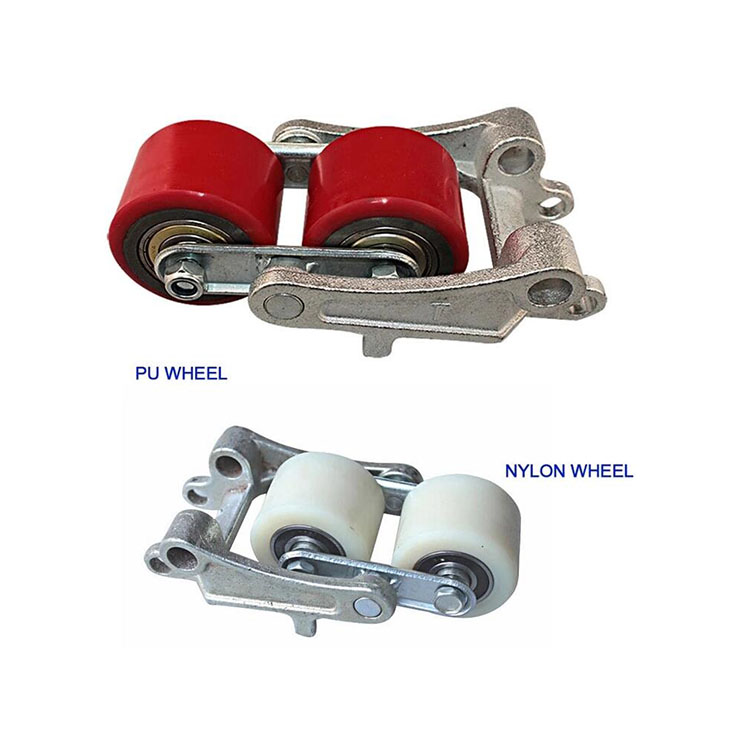


Understanding Lever Hoist Chain Blocks An Essential Tool for Lifting
Lever hoist chain blocks, commonly referred to as lever hoists, are invaluable tools in various industries, particularly in construction, manufacturing, and shipping. These devices are designed to lift heavy loads with minimal effort, showcasing an ingenious blend of mechanical advantage and user-friendly design. In this article, we will delve into the working principles, applications, advantages, and safety considerations associated with lever hoist chain blocks.
What is a Lever Hoist Chain Block?
A lever hoist is a type of lifting device that utilizes a lever mechanism to lift and move heavy objects. The fundamental components of a lever hoist include a hand lever, ratchet, load chain, and hook. The user operates the hoist by pulling the lever, which engages a ratchet system that increments the position of the load chain, lifting the attached object. This mechanical system allows the user to lift loads that are significantly heavier than the effort applied.
Working Principles
The effectiveness of a lever hoist lies in the mechanical advantage provided by its design. When the user pulls the lever down, it translates into a lifting motion, pulling the load chain upward. The length of the lever arm directly influences the amount of force required; a longer lever means less effort to lift a heavier load. The load chain and the ratchet mechanism work in harmony, ensuring that the hoist can lock in place once the desired height is achieved, thus providing stability.
Lever hoists are characterized by their load capacity, which can range from a few hundred kilograms to several tons. The specific capacity depends on the design and materials used in the construction of the hoist. It is vital to use a lever hoist that is rated for the type of load being handled to ensure safety and efficiency.
Applications
Lever hoists are versatile tools and can be employed in various scenarios, including
1. Construction Sites They are commonly used to lift heavy materials such as steel beams, concrete blocks, and other construction equipment, making it easier for workers to handle materials safely and effectively.
2. Manufacturing In production facilities, lever hoists are used to lift and position machinery or assemble heavy components, enhancing workflow and minimizing manual labor risks.
3. Maintenance and Repair In automotive and machinery repair shops, lever hoists facilitate the lifting of engines, transmissions, and heavy equipment parts, allowing technicians to work more efficiently.
4. Shipping and Distribution Loading and unloading heavy goods from trucks and shipping containers can be labor-intensive. Lever hoists streamline these processes, reducing injury risks associated with manual lifting.
Advantages of Lever Hoists

The widespread adoption of lever hoists in various industries can be attributed to several advantages
- Portability Most lever hoists are lightweight and compact, making them easy to transport and store when not in use
.- Ease of Use With minimal training, operators can quickly learn to use a lever hoist safely and effectively.
- Cost-Effectiveness Lever hoists are generally more affordable than powered lifting devices, making them a popular choice for small businesses and individual users.
- Durability and Reliability Constructed from robust materials, lever hoists are designed to withstand the rigors of heavy use and challenging environments.
Safety Considerations
While lever hoists are simple and efficient tools, safety must always be a priority. Here are some essential safety tips
- Load Capacity Always adhere to the manufacturer's specified load limits. Overloading can lead to equipment failure and accidents.
- Inspection Regularly inspect the hoist for wear and tear, particularly on the load chain and hooks. Any signs of damage should be addressed immediately.
- Proper Setup Ensure that the hoist is correctly anchored and positioned to avoid slippage or tipping during use.
- Operator Training Only trained personnel should operate lever hoists to ensure proper handling and awareness of safety protocols.
Conclusion
In summary, lever hoist chain blocks are indispensable tools that facilitate the safe and efficient lifting of heavy loads across various industries. Their simplicity, portability, and cost-effectiveness make them a preferred choice for many. By understanding their operation and adhering to safety standards, users can maximize the benefits of this robust lifting solution while minimizing risks in the workplace.



